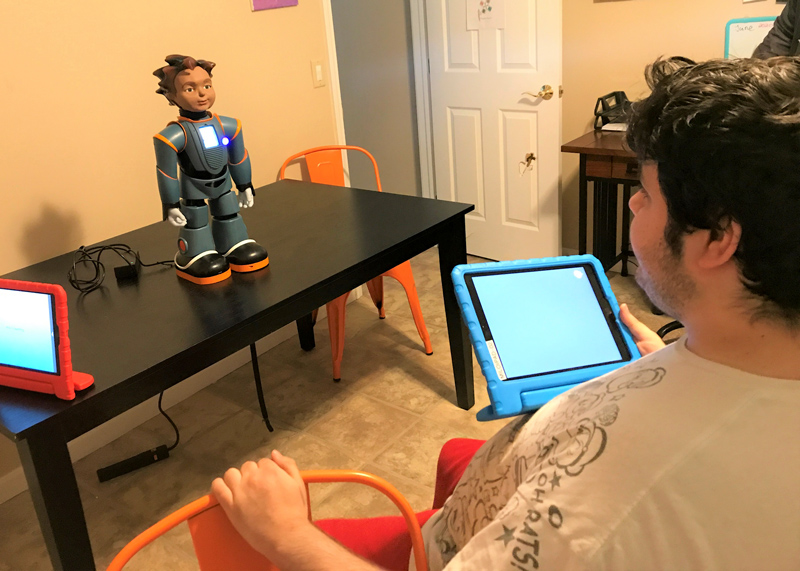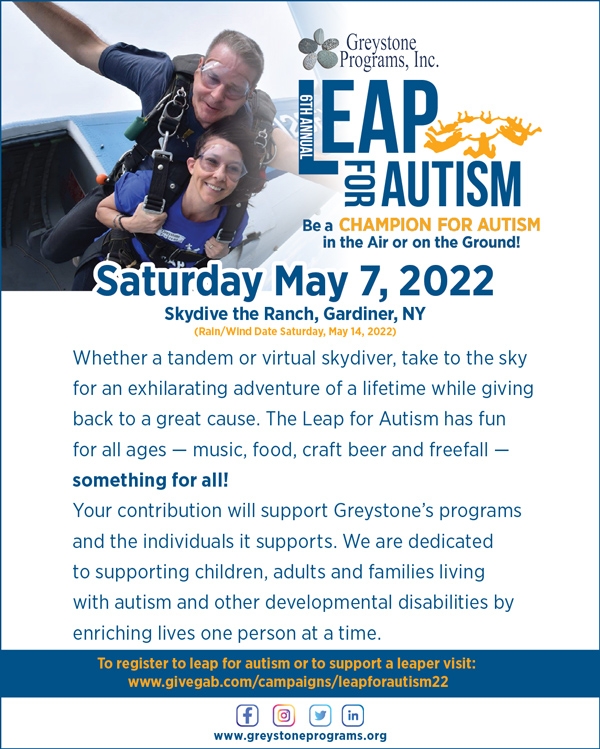The COVID-19 pandemic moved us into a digital space and opened up the world of smart technologies. It challenged us to ask ourselves, “How can we integrate advances in technology into the lives of our individuals to promote independence, lessen the dependency on staff, and move away from a prompt dependent environment?” At Greystone Programs Inc., we are leveraging the power of smart technologies to increase health & wellness, promote independence, and increase autonomy to improve the quality of life of the individuals we support. We believe we can utilize the current technologies by building upon what exists and being involved in future developments to assist our individuals. Our agency is transforming into a Technology First organization to make this change. Given the rapid pace at which our technology is evolving, agencies will be better positioned to support the varied needs of the individuals they support by adopting a Technology First approach sooner rather than later.

A young man at Greystone Programs Amenia residence works with Robokind’s Milo to engage in social skill development
A guide published by the Tennessee Department of Intellectual & Developmental Disabilities titled Agency Transformation to a Technology First Organization defines transformation as “more than offering Enabling Technology, adding it as a support option, or supplementing other options. Transformation requires a change in culture, a new approach to workforce development, a new perspective on the complementary relationship between Enabling Technology and in-person supports. It is a whole-life approach to the potential role of Enabling Technology in creating opportunities for greater independence. It means that paid supports promote independence through technology in their interactions.”
To be a Technology First organization, an organization embraces technology as the first source of support when addressing outcomes in service planning. SimplyHome (2019) describes a Technology First approach as “the desire for people to learn more about how to use technology to improve their quality of life at home, at work, and in the community.” This transformation is a crucial step to developing a culture of technology inclusion. When we look at the power of technology inclusion, we see the possibilities that it can bring to the individuals we support. Technology can cue independence and daily routines, counteract risks, provide positive reinforcement, provide non-verbal avenues for communication, help support and teach new skills, advance skill sets, build and establish routines. It can expose individuals and staff members to technologies they may never have or may not engage with or be able to access otherwise. More importantly, the impact that technology inclusion brings to people who historically do not get the same exposure to technology as the mainstream public is transformative in and of itself.
Consider your access and use of the internet and how important that is to your daily functioning. Now consider this: “According to Pew Research, a quarter of people with disabilities say they never go online, and more than half say they do not have a home broadband subscription (American Association of People with Disabilities)” (Bisaillon, 2022). There is a whole world-wide-web of experiences and opportunities that are going unexplored. Because of this fact, it is why technology inclusion is vitally important and why your organization should adopt a Technology First approach. In an article titled Connectivity and Assistive Technology can Equalize Opportunity for People with Disabilities, Bisaillon (2022) notes that “assistive technology, internet access, and funding for training empowers people with disabilities to do things that they never imagined. It allows us, as service providers, to know that we have done more than provide care – we have provided inspiration, challenge, and change.”
In every case, putting technology into the hands of the individuals we support starts with the individual. Whether it be an intrinsic desire to seek out technology or an identified area of need that technology can meet, the individuals and their needs guide the technology selection. There is no one-size-fits-all approach to technology inclusion. The individuals we support are unique, so their technological solutions must also be unique. The process should start with assessing the individual’s needs and abilities to engage with their environment and future technologies. The assessment should also identify if the individual requires a modification to the technology, an assistive device, or an accessibility feature to be enabled. The University of Pittsburgh’s Human Engineering Research Laboratories is developing and evaluating a comprehensive technology-based assessment called ASSIST –Autonomy, Safety, and Social Integration via Smart Technologies, from which they’ve created the ASSIST Functional Performance Index. Using assessments like ASSIST ensures that you are evaluating the needs of the individual and matching them with the technology that is the best fit for them. This research is still ongoing, but an assessment is the starting point for getting technology into the hands of the individuals we support in a data-driven way.
Once an assessment or an area of need is identified, the research can begin to match the individual with a piece of smart technology. Today’s technologies have a low bar to interact with them, meaning the learning curve is not as demanding as before. Today, most smart technologies can be automated or operated remotely or via a Smart hub like Amazon Alexa or Google Home. Once a piece of technology is selected, the next step is to trial the technology and gather data. A data-driven approach ensures that the technology is adequate for meeting that individual’s needs. At Greystone Programs, we combine the efforts of technology inclusion with the science of Applied Behavior Analysis, a type of therapy that improves specific behaviors and adaptive learning skills that can gradually and permanently alter individuals’ behaviors. Through pairing and reinforcement procedures, individuals are introduced to new technologies. As a result, human prompts can be slowly faded and replaced with technological ones so that our individuals can live their most independent lives.
The technology that Greystone deploys improves the lives of the individuals we support in the following domains: physical, communication, leisure/social, and health. Examples include an Amazon Alexa programmed to provide a fun and engaging movement prompt (e.g., queuing an announcement and song to get up and exercise). While a smartwatch might send a vibration alert at the same time that lights might turn on to encourage individuals to get up and move to other areas of the home. Smart water bottles might remind individuals to drink and stay hydrated. Smart toothbrushes increase oral hygiene by providing a visual prompt for proper toothbrushing. All the while, these devices gather important passive data and vitals in the background that we can then use to make informed decisions about their care and well-being. Smart devices like iPads can make communication more fluid and robust. Technologies like Tobii Dynavoxx’s TDPilot now allow you to interact with your iPad with just your eyes. Visual schedules like those provided by Routine Factory help individuals plan their days ahead. Smartboards in the classroom make learning more engaging and interactive.
Keeping connected during the lockdowns and quarantines was especially an area of concern, so Greystone Programs utilized technologies like Facebook Portal and Zoom to support individuals and their families and friends to stay connected. Robots like RoboKind’s Milo help individuals improve their social skills with a novel friend. Smart devices can monitor for safety risks like falls, heart rates, low or high respiration rates, seizures, movement, and sleep. Smart plugs turn appliances into smart appliances. Video game systems like the Nintendo Wii and Microsoft Xbox support fitness and leisure. These technologies combined will move individuals towards less reliance on human staff, a greater sense of autonomy, and a more enjoyable life. As our CEO, Skip Pryce, says, “Innovation does not happen by itself; there must be a conscious effort,” at Greystone Programs Inc., we are making that conscious effort to be more technologically inclusive.
Matthew Cerasaro is the Technology Inclusion Coordinator at Greystone Programs, Inc. supporting the agency transformation to a Technology First organization. For over 40 years Greystone Programs, Inc. has been dedicated to supporting children, adults and families living with autism and other developmental disabilities by enriching lives one person at a time. For more information, contact Mathew Cerasaro at mcerasaro@greystoneprograms.org or 845-309-7068.
References
Agency transformation to a technology first organization. (n.d.). Retrieved January 15, 2020, from www.tn.gov/content/dam/tn/didd/documents/providers/resources-manuals/Agency%20Tranformation%20to%20Tech%20First%20Org.pdf
Bisaillon, C. (2022, January 7). Connectivity and assistive technology can equalize opportunity for people with disabilities. GeekWire. Retrieved February 1, 2022, from www.geekwire.com/sponsor-post/connectivity-and-assistive-technology-can-equalize-opportunity-for-people-with-disabilities/
Ding, D., Lindsey Morris, L., & Fairman, A. (2021). Assistive Technology Industry Association. Development of ASSIST Checklist for Use of Smart Home Technology as Assistive Technology.
SimplyHome. (2019, May 10). Technology first: A growing movement in I/DD Services (part 1). SimplyHome. Retrieved February 1, 2022, from www.simply-home.com/blog-overview/technology-first-a-growing-movement-part-1






